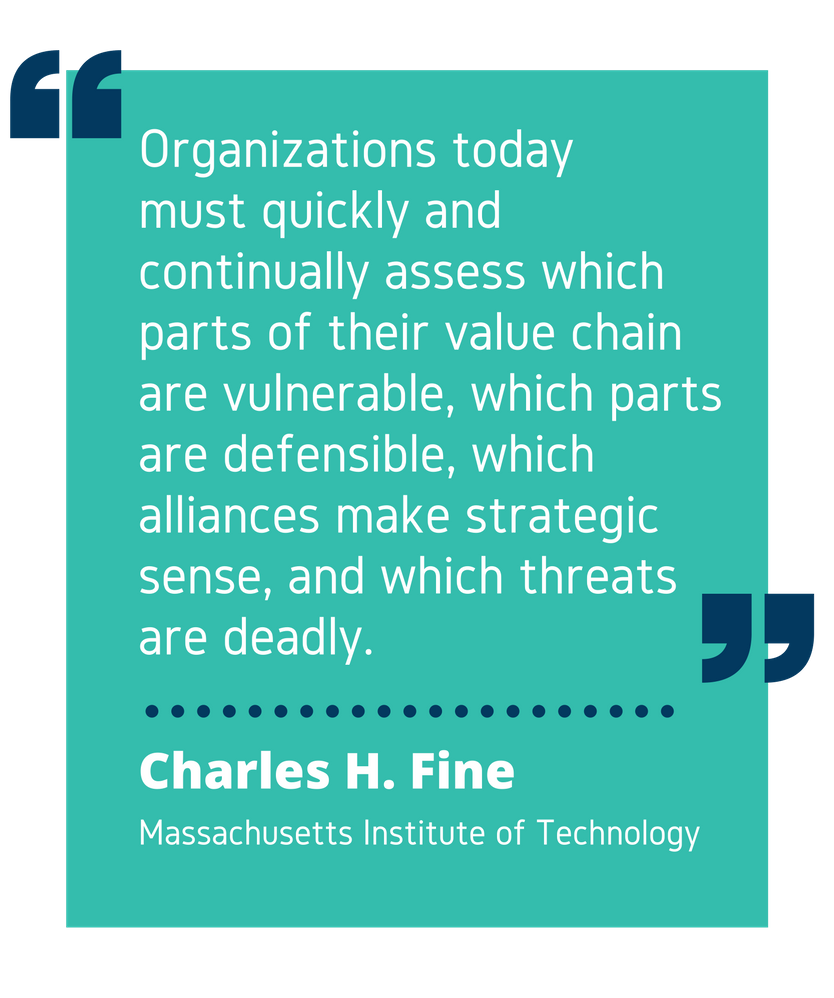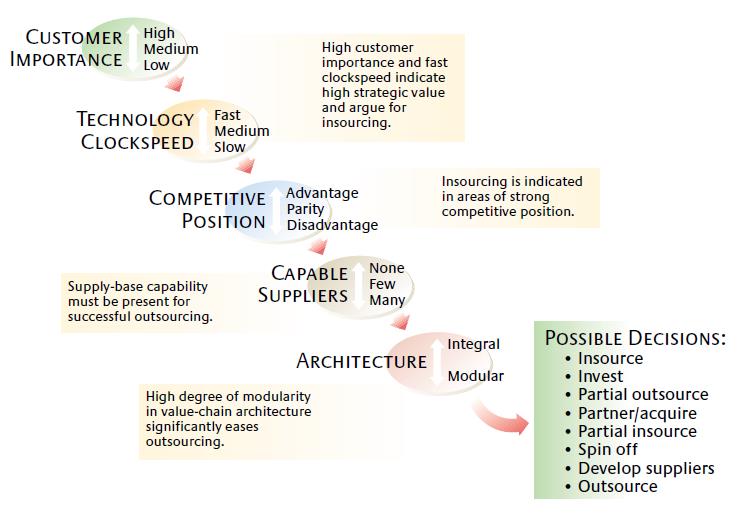The Power of Purposeful Partnerships: Applying the Strategic Value Assessment Model for Innovation
By Greg Heist, Chief Innovation Officer, Gongos, Inc.
{Author’s note: For the purpose of this article, value chain is defined as every element that goes into creating a final product or service, and who is sourced to provide various elements of it.}
 When the term “partnership” is used, typically one envisions a traditional arrangement where two or more parties share vested ownership and governance in a business.
When the term “partnership” is used, typically one envisions a traditional arrangement where two or more parties share vested ownership and governance in a business.
For this post, however, the idea of partnership will take on a broader definition: the result of a strategic decision by a business to navigate and innovate within the changing competitive landscape to bring new value to its customers.
When it comes to consumer intelligence, the stakes are not only high; the ability to attain a competitive advantage is an ever-elusive goal. The rapid acceleration of new technologies such as beacons, virtual reality, and machine learning is seemingly putting everyone in the business of buying, building or partnering.
The Risky Business of the Buy vs. Build Paradox
Traditionally, many companies have operated as solitary entities—fortresses that demand internal investment to ensure market dominance. This mindset also carries forward as companies strategically acquire smaller players to bolster their position in the marketplace.
While in some cases, this traditional way of thinking seems logical, data also shows that it often leads to less-than-desirable results. In fact, a 2011 HBR article authored by innovation icon Clayton M. Christensen cites the failure rate for traditional mergers and acquisitions stands at an abysmal 70-90%.
Beyond its riskiness and marginal success rate, the traditional “go-it-alone and acquire” model is out of reach for many small and mid-size companies that lack the financial resources to compete in this way.
Therefore, in the modern world of business, a much broader and more dynamic way of approaching partnerships is necessary. The blistering pace of changing client and consumer needs, the rapid rise of new kinds of competitors, and the unrelenting acceleration of technological shifts demand a new model for companies to create value in the marketplace.
Given this, a central question arises: How can companies design their value chain in different ways to seize growth opportunities and meet client needs?
Below are four illustrative situations that organizations in the consumer insights and intelligence space commonly find themselves in, challenging the traditional buy vs. build paradox:
- Rapidly innovate for competitive advantage while reducing the risk to the organization
- Quickly go to market to address unmet client needs
- Deliver highly specialized (and infrequently utilized) capabilities to clients
- Build flexible capacity to seamlessly deliver to customers without hiring new employees
Moving Beyond Buy vs. Build: Value Chain Design for the 21st Century
A powerful way to face these situations lies in the discipline of strategic value chain design. This approach focuses on looking at the Strategic Value Add (SVA) of any new potential opportunity in light of a number of specific factors to determine what value chain is best to capitalize on it, including:

- IMPORTANCE: Importance to customers for the company to have internally built the capability
- CLOCKSPEED: The pace at which the underlying technology is changing
- COMPETITIVE POSITION: A company’s ability to gain a competitive edge by developing it
- SUPPLIER BASE: The depth of capable third parties to fulfill on the capability
- ARCHITECTURE: The ease by which the capability integrates into the company’s workflow
Rapid-Response Capability in Value-Chain Design – MIT Sloan Management Review, Winter 2002
Dependent on how an opportunity nets out amongst these various factors, this framework provides guidance about whether the organization should invest, outsource, acquire, or develop a strategic partnership to capitalize on it.
In the past, our company prided itself in a go-it-alone spirit. Decisions about pursuing new, innovative opportunities were almost solely based on whether or not we had the internal expertise to control and capitalize on them.
However, as the evolution of our industry accelerated, it became clear that there were more compelling opportunities in front of us than we had the internal resources to pursue. As the nature of our business and the needs of our clients shifted, we found that adopting a more strategic approach to the design of our value chain necessary. And, given that many firms in our indusry face similar challenges, we believe this framework could likewise offer needed direction to address them.
A Case in Point: Creating New Value in the Customer Experience (CX) Space
In early 2016, a more strategic focus to help our clients with their Customer Experience needs became a logical extension of our path to purchase, customer journey mapping, and analytics expertise. Additionally, given how rapidly CX is growing as a competency, it is obviously attractive from a business perspective.
In engaging with an industry consultant with deep CX knowledge, we began to explore this market, the players, and the scope of services that comprise the CX value chain. In surveying the landscape, the white space opportunities for us became evident. At the same time, it was also clear that the central data collection mechanism (known as Voice of the Customer [VOC] platform) was dominated by a number of strong, well-established technology providers.
Historically, our mindset would have led us down the path of trying to build a VOC capability into our proprietary Instinct™ platform, and as such go to market with a hybrid service/platform offering.
However, in applying the strategic value chain framework, several things became clear with respect to VOC technology:
- IMPORTANCE: With most CX clients already having embedded VOC systems, they place almost no importance on Gongos bringing its own proprietary VOC technology
- CLOCKSPEED: As a rapidly growing discipline, the technology underpinning VOC capture is relatively fast and requires consistent investment by the company developing it
- COMPETITIVE POSITION: Lacking an existing VOC technology offering, we are at a strong competitive disadvantage to already-existing players
- CAPABLE SUPPLIERS: There are many VOC technology providers willing to provide the technology to a Gongos client if it was needed
- ARCHITECTURE: Given the range of analytical and insight curation-related CX services, we are fully agnostic to the VOC platform used to collect data
Given this, it became obvious that it was in our best interest to pursue a partnership with one or more VOC platform providers. Under this scenario, clients could benefit from the complementary strengths of Gongos’ consultative, analytics and socialization approaches, and the power of the VOC platform’s real-time interaction engine.
Our decision to approach the market in this manner has opened up new possibilities for clients. Beyond just measuring the experience, we are able to link it to their entire ecosystem ensuring they capture the right information while helping devise pragmatic actions that align with their business strategy. We then develop consumable and immersive deliverables that connect the right insights to the right people at the right time. As a result, our offerings are more agile and differentiated than if we stuck to our historical go-it-alone services-and-technology mindset.
Partnerships have existed since the beginning of time and they will continue to serve businesses of all types. That is why frameworks like the Strategic Value Chain are essential for companies to reimagine the power of purposeful partnerships as a way of creating new and innovative solutions for clients.
Embracing the velocity of business and technology opens the door to strategic relationships with firms that are concurrently trusted partners and potential competitors. This flexible partnership mindset is not only becoming a new norm, but ultimately, it is a vehicle for creating new kinds of value for clients and customers that would otherwise not exist.
As published in Business 2 Community and Insights Association.
